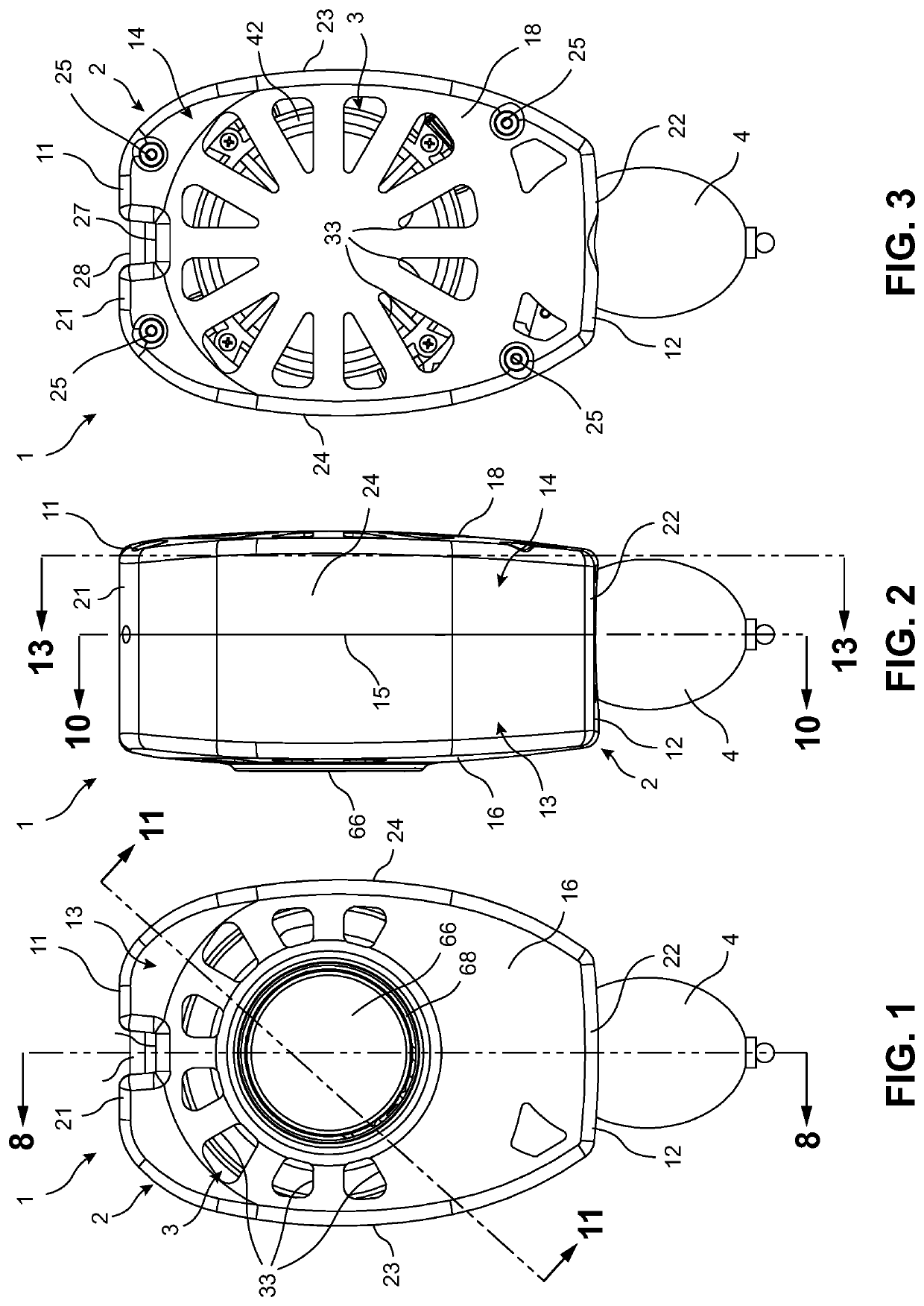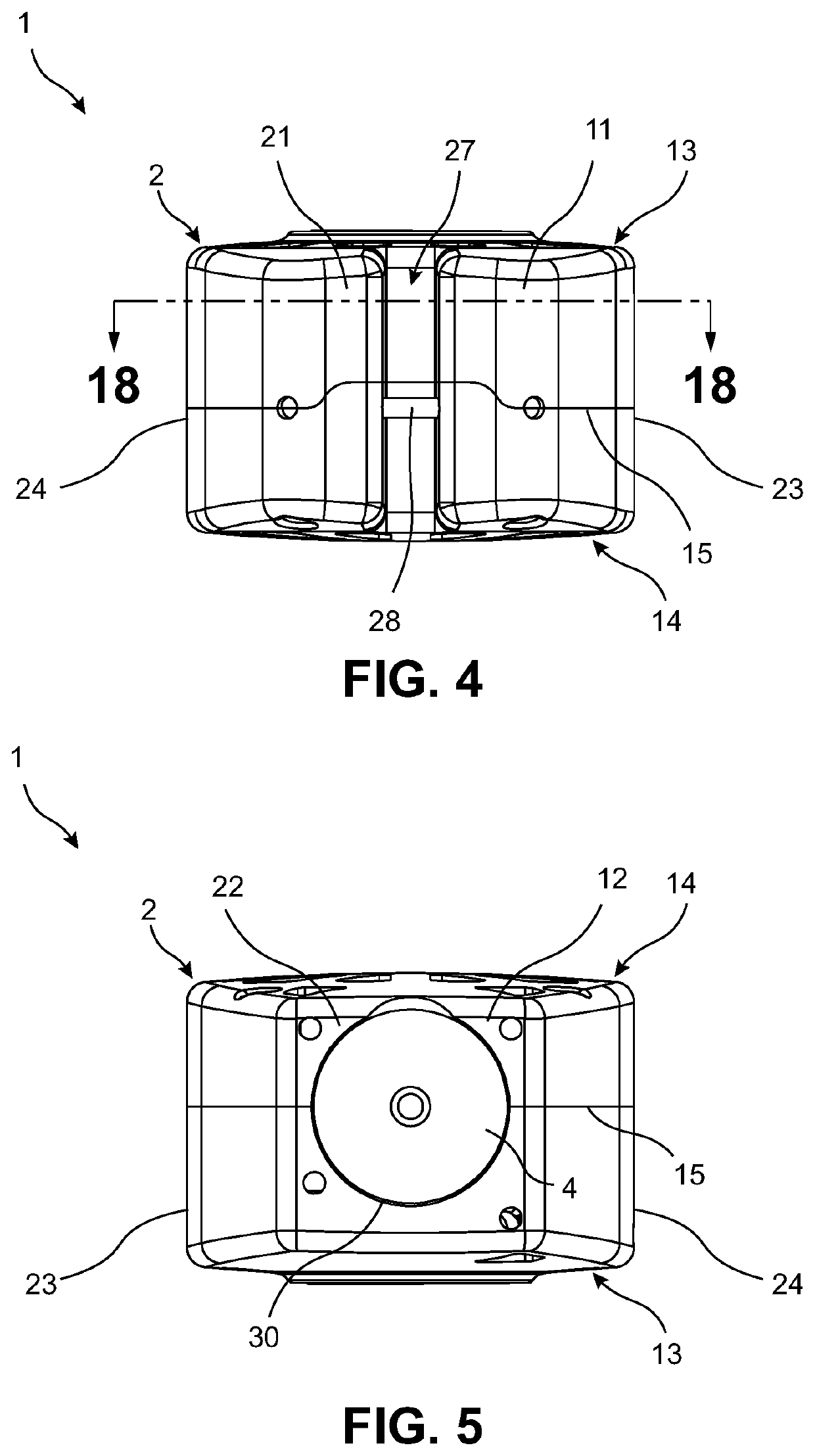Retractable duck decoy weight
a duck and weight technology, applied in the field of duck decoy weight and weight retracting, can solve the problems of affecting the ability of the hunter to maintain a desired, decoys to undesirably interact with each other, and affecting the anchoring ability of the weight,
- Summary
- Abstract
- Description
- Claims
- Application Information
AI Technical Summary
Benefits of technology
Problems solved by technology
Method used
Image
Examples
Embodiment Construction
[0034]The following detailed description and appended drawings describe and illustrate various exemplary embodiments of the invention. The description and drawings serve to enable one skilled in the art to make, and use the invention, and are not intended to limit the scope of the invention in any manner. With respect to the methods disclosed, the steps presented are exemplary in nature, and thus, the order of the steps is not necessary or critical.
[0035]FIGS. 1-22 illustrate a weight retraction device 1 for use with waterfowl decoys according to an embodiment of the present invention, wherein the weight retraction device 1 is referred to as the device 1 hereinafter for brevity. As shown in FIG. 7, the device 1 is configured for removable coupling to an associated waterfowl decoy 200. The waterfowl decoy 200 may be representative of any type of decoy typically configured to float on the surface of a body of water, such as the duck-shaped decoy illustrated herein. However, one skille...
PUM
 Login to View More
Login to View More Abstract
Description
Claims
Application Information
 Login to View More
Login to View More - R&D
- Intellectual Property
- Life Sciences
- Materials
- Tech Scout
- Unparalleled Data Quality
- Higher Quality Content
- 60% Fewer Hallucinations
Browse by: Latest US Patents, China's latest patents, Technical Efficacy Thesaurus, Application Domain, Technology Topic, Popular Technical Reports.
© 2025 PatSnap. All rights reserved.Legal|Privacy policy|Modern Slavery Act Transparency Statement|Sitemap|About US| Contact US: help@patsnap.com



